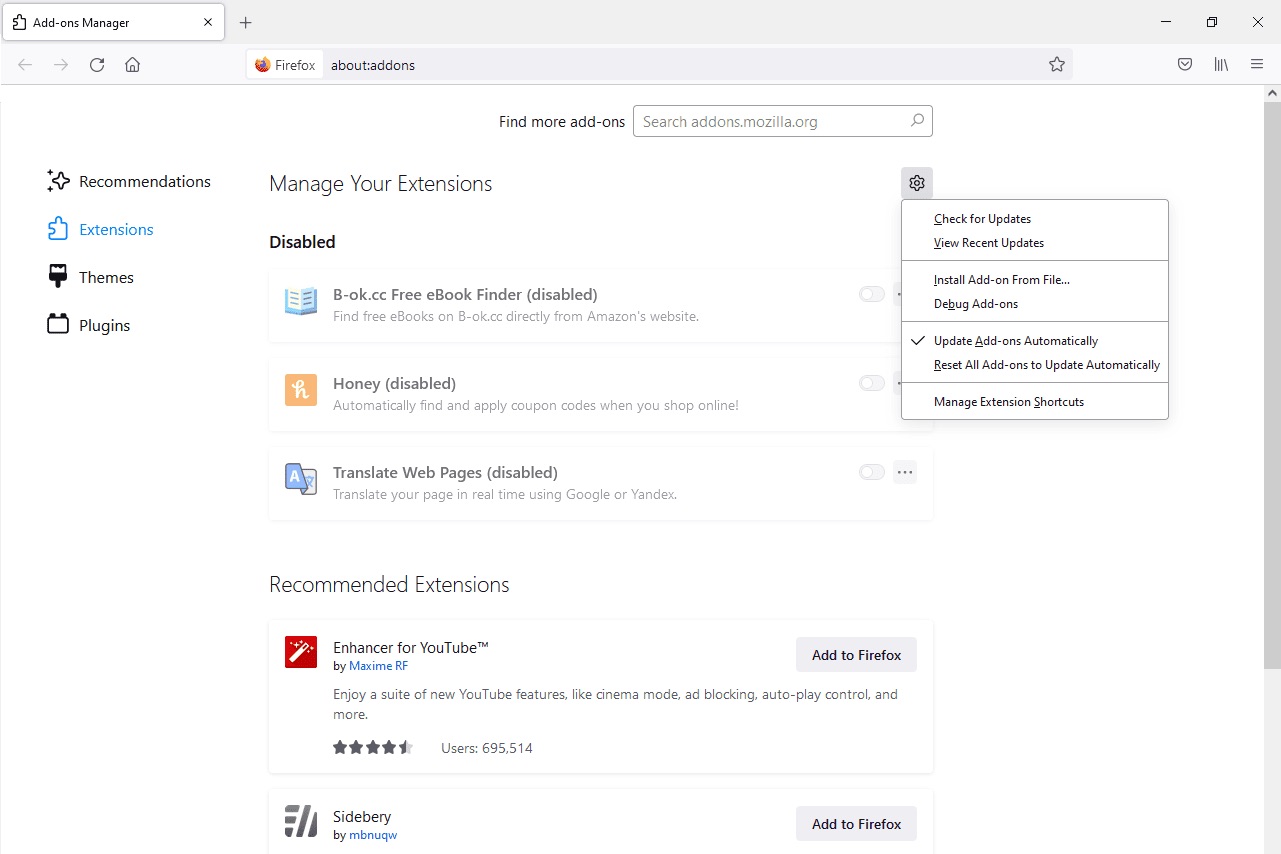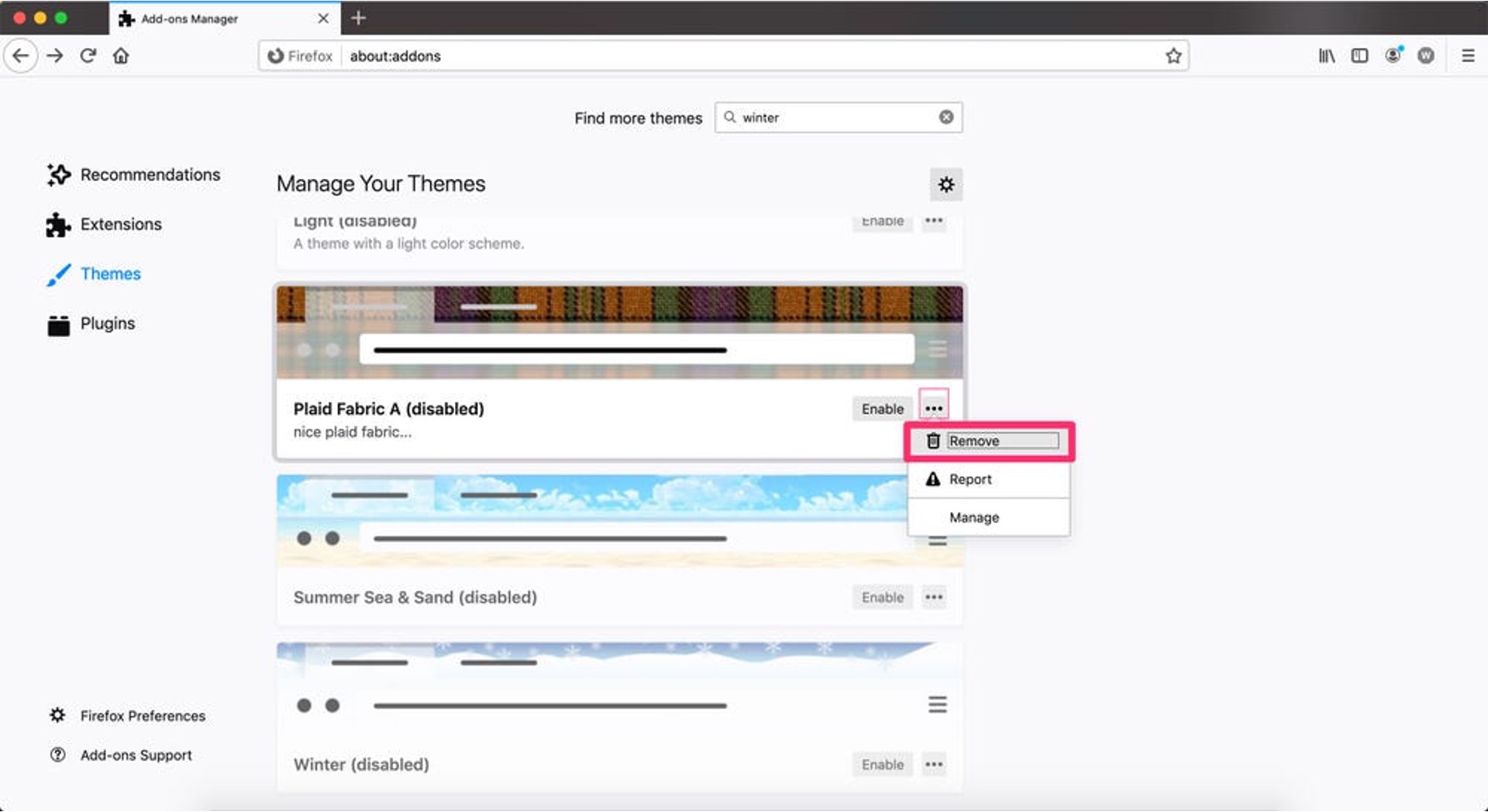Introduction
So, you've stumbled upon an XPI file and you're wondering what to do with it. Well, you've come to the right place! An XPI file is essentially a compressed file that contains a Firefox browser extension. These extensions, also known as add-ons, can enhance your browsing experience by adding new features, modifying the appearance of web pages, or even altering the browser's behavior.
Firefox, known for its flexibility and customization options, allows users to easily install these extensions to tailor their browsing experience to their preferences. Whether you're looking to boost productivity, enhance security, or simply add a touch of personalization to your browser, installing an XPI file is the gateway to unlocking a world of possibilities within Firefox.
In this guide, we'll walk you through the process of installing an XPI file in Firefox, ensuring that you can seamlessly integrate new extensions into your browsing environment. By the end of this tutorial, you'll be equipped with the knowledge and skills to effortlessly expand Firefox's functionality and make it uniquely yours. So, let's dive in and embark on this journey to harness the full potential of Firefox through the installation of XPI files.
Step 1: Download the XPI File
Before you can install an XPI file in Firefox, you need to obtain the file itself. Here's how you can download an XPI file:
-
Identify the Desired Extension: First, you need to identify the Firefox extension you want to install. You can explore the official Mozilla Add-ons website or other reputable sources to find a wide array of extensions designed to enhance your browsing experience. Whether you're looking for ad blockers, password managers, or productivity tools, there's an extensive selection of extensions available for various purposes.
-
Navigate to the Extension's Page: Once you've identified the extension you want, navigate to its page on the Mozilla Add-ons website or the developer's website. This page typically provides an overview of the extension's features, user reviews, and a download button.
-
Click on the Download Button: Look for the download button on the extension's page and click on it. This action initiates the download process, and the XPI file will be saved to your computer's designated download location.
-
Verify the Download: After the download is complete, it's a good practice to verify the file to ensure its integrity. You can do this by checking the file size and comparing it to the size indicated on the extension's download page. Additionally, you can use antivirus software to scan the file for any potential threats, ensuring that you're downloading a safe and authentic XPI file.
By following these steps, you can successfully download the XPI file for the Firefox extension you wish to install. Once you have the XPI file saved on your computer, you're ready to proceed to the next step and seamlessly integrate the extension into your Firefox browser.
Remember, it's essential to download extensions from trusted sources to ensure the security and reliability of the XPI files. With the XPI file in hand, you're one step closer to unlocking new features and capabilities within Firefox.
Step 2: Open Firefox
With the XPI file securely downloaded to your computer, the next step is to open your Firefox browser. Here's a detailed guide on how to proceed:
-
Launch Firefox: Locate the Firefox icon on your desktop or in your list of installed applications. Double-click on the icon to launch the browser. Alternatively, you can use the search function on your computer to find and open Firefox.
-
Check for Updates: Before proceeding further, it's a good practice to ensure that your Firefox browser is up to date. Keeping your browser updated not only provides you with the latest features and security enhancements but also ensures compatibility with the extensions you intend to install. To check for updates, click on the menu icon (three horizontal lines) in the top-right corner of the browser window. From the dropdown menu, select "Help" and then click on "About Firefox." This action will prompt Firefox to check for updates and install them if available.
-
Access the Add-ons Manager: Once Firefox is open, navigate to the menu located in the top-right corner of the browser window. Click on the menu icon (three horizontal lines) to reveal the dropdown menu. From the menu, select "Add-ons." This action will open the Add-ons Manager, where you can manage your installed extensions and install new ones.
-
Explore Extension Options: Within the Add-ons Manager, you'll find different tabs, including "Extensions," "Themes," and "Plugins." Click on the "Extensions" tab to view the extensions currently installed in your browser. This step allows you to familiarize yourself with the existing extensions and understand how the new extension, contained in the XPI file, will integrate with your browsing environment.
-
Prepare for Installation: Before proceeding with the installation of the XPI file, it's essential to review the extension's details and permissions. This information is typically available on the extension's page in the Add-ons Manager. Understanding the features and permissions of the extension can help you make an informed decision before integrating it into your browser.
By following these steps, you can successfully open Firefox and prepare the environment for the installation of the XPI file. With the browser ready and the extension details reviewed, you're now poised to seamlessly install the Firefox extension contained within the XPI file, enhancing your browsing experience with new features and functionalities.
Step 3: Install the XPI File
Now that you have the XPI file downloaded and Firefox open, it's time to proceed with the installation of the Firefox extension contained within the XPI file. Follow these steps to seamlessly integrate the extension into your browsing environment:
-
Access the Add-ons Manager: In the Add-ons Manager, click on the gear icon located in the top-right corner of the page. From the dropdown menu, select "Install Add-on From File." This action will prompt a file explorer window to appear, allowing you to navigate to the location where the XPI file is saved on your computer.
-
Navigate to the XPI File: Use the file explorer window to locate and select the XPI file you downloaded in the previous step. Once you've selected the file, click "Open" to initiate the installation process.
-
Review Permissions: After selecting the XPI file, Firefox will display a confirmation window detailing the permissions required by the extension. It's essential to review these permissions to ensure that the extension aligns with your preferences and security considerations. By understanding the permissions, you can make an informed decision about integrating the extension into your browser.
-
Confirm Installation: Upon reviewing the permissions, click "Add" to confirm the installation of the extension. Firefox will proceed to install the extension contained within the XPI file, seamlessly integrating it into your browser environment.
-
Installation Completion: Once the installation process is complete, Firefox will display a notification confirming the successful integration of the extension. You may also receive a prompt to restart the browser to finalize the installation. If prompted, click "Restart Now" to ensure that the newly installed extension becomes fully functional.
By following these steps, you can effectively install the XPI file and integrate the Firefox extension into your browsing experience. With the extension successfully installed, you're now equipped with new features and capabilities that enhance your productivity, security, and overall browsing experience within Firefox.
Step 4: Restart Firefox
After successfully installing the XPI file and integrating the Firefox extension into your browsing environment, it's essential to ensure that the newly added features and functionalities become fully operational. This can be achieved by restarting the Firefox browser, allowing the extension to initialize and seamlessly integrate with the existing components of the browser. Here's a detailed guide on how to proceed with restarting Firefox after installing an XPI file:
-
Completion Notification: Upon the successful installation of the extension contained within the XPI file, Firefox typically displays a notification confirming the completion of the installation process. This notification serves as an indicator that the extension is ready to be activated, and a browser restart may be required to finalize the integration.
-
Prompt for Restart: In some cases, Firefox may prompt you to restart the browser to ensure that the newly installed extension becomes fully functional. This prompt is a crucial step in the installation process, as it allows the browser to reload and apply the changes necessary for the extension to take effect.
-
Manually Restarting Firefox: If you do not receive a prompt to restart the browser, you can manually initiate the restart process. To do this, navigate to the menu located in the top-right corner of the browser window and click on the "Restart Firefox" option. Alternatively, you can simply close the browser and relaunch it to initiate the restart.
-
Verifying Extension Activation: After restarting Firefox, it's important to verify that the newly installed extension is active and operational. You can do this by accessing the Add-ons Manager and navigating to the "Extensions" tab. Here, you should see the newly installed extension listed among your active extensions, indicating that it has been successfully integrated into the browser.
-
Testing Functionality: Once the browser has been restarted and the extension is confirmed to be active, take the opportunity to test the functionality of the extension. Depending on the nature of the extension, you may notice new features, options, or tools available within the browser interface. By exploring the functionality of the extension, you can fully leverage its capabilities to enhance your browsing experience.
By following these steps and restarting Firefox after installing an XPI file, you ensure that the newly integrated extension becomes fully operational, allowing you to harness its features and functionalities to customize and optimize your browsing experience within Firefox.
Conclusion
Congratulations! You've successfully navigated the process of installing an XPI file in Firefox, unlocking the potential to customize and enhance your browsing experience with new extensions. By following the steps outlined in this guide, you've gained the knowledge and skills to seamlessly integrate Firefox extensions contained within XPI files, expanding the capabilities of your browser to align with your preferences and requirements.
As you venture into the world of Firefox extensions, it's important to explore the diverse array of add-ons available, each offering unique features and functionalities designed to cater to various aspects of your browsing needs. Whether you're seeking to bolster your privacy and security, streamline your workflow, or personalize the appearance of web pages, the realm of Firefox extensions holds a wealth of possibilities waiting to be discovered.
Furthermore, the process of installing XPI files serves as a gateway to harnessing the full potential of Firefox, allowing you to tailor the browser to your specific preferences and requirements. With the ability to seamlessly integrate extensions, you have the power to transform Firefox into a personalized and feature-rich browsing environment that aligns with your individual needs and enhances your overall online experience.
As you continue to explore the world of Firefox extensions, remember to prioritize security and reliability by obtaining XPI files from trusted sources. By exercising caution and discernment in your selection of extensions, you can ensure that your browsing environment remains secure and free from potential threats.
In conclusion, the installation of XPI files in Firefox empowers you to customize and optimize your browsing experience, unlocking a world of possibilities through the seamless integration of diverse extensions. With your newfound knowledge and skills, you're well-equipped to navigate the dynamic landscape of Firefox add-ons, discovering and integrating extensions that cater to your unique preferences and elevate your browsing experience to new heights. Embrace the versatility and customization options offered by Firefox extensions, and embark on a journey of exploration and enhancement within the realm of web browsing.
























